Quyuan Hometown Tourist Area
The cultural tourist area of Quyuan's hometown is located in Fenghuangshan, Zigui County, Yichang City, with a total area of 33.3 hectares in the north, Gaoxia Pinghu Lake in the north, Zigui New County Town in the West and south, and the Three Gorges Dam in the east. The scenic spot is the Quyuan Cultural Tourism Park with Quyuan Temple and Quyuan Yiguan Tomb as its main content, and the intangible cultural exhibition park with Xiajiang Shadow Show, witchcraft performance and boatman's chant as its main content is the first-class heritage protection base in China. Only 600 meters away from the Three Gorges Dam, standing on the top of Phoenix Mountain in the scenic spot, the Three Gorges Dam can be seen at a glance. It is now a national AAAAA-level tourist attraction (5A), national key cultural relics protection unit.
Basic introduction
Located in the new County town of Zigui County, the scenic spot of Quyuan's hometown is adjacent to the Three Gorges Dam with a straight line distance of 600 meters and covers an area of about 500 mu. The beautiful scenery of Pinghu Lake in Gaoxia is in full view. At the same time, 24 Cultural Relics on the ground of the Gorges, represented by Quyuan Temple and Jiangdu Temple, have been relocated here. In May 2006, it was announced by the State Council as the Sixth Batch of national key cultural relics protection. Company. The main contents of the reserve include Quyuan Memorial Scenic Spot, Xintan Ancient Residence, Xiajiang Stone Carvings and Xiajiang Ancient Bridge, as well as Quyuan Cultural and Art Center and Waterfront Landscape Belt.
The development and construction of Quyuan's hometown scenic spot is based on the theme of promoting Quyuan's culture, tracing the rhyme of Chu in the Xiajiang River, and viewing the mood of Tianbu. It highlights the cultural connotation of Quyuan's hometown, increases its cultural connotation, combines the rich historical culture, folk culture and Quyuan's cultural resources in Zigui County, and cultivates and develops the literature and art with Ba-Chu flavor. Dramas, performances and diets, develop and explore sacrificial rites, recreational activities and tourism services with strong local characteristics, while emphasizing the development of tourism products with rich cultural connotations such as historical relics, religious culture, residential culture and tea culture with the local characteristics of the Three Gorges.
Quyuan Temple is an important part of the National Heritage Reserve. The original site of Quyuan Temple was "Quyuan Tuo" in the five miles east of Zigui Guizhou City. It was built in the Tang Dynasty and renamed "Qingli Gong Temple" in the third year of Yuanfeng (1080 A.D.). In July 1976, due to the Gezhouba Water Conservancy Project, it was relocated to Guizhou and renamed "Quyuan Temple". Nowadays, due to the construction of the Three Gorges Dam, the newly built Quyuan Temple is situated on the hill beams of Phoenix Mountain, facing Southeast and opposite to the front of the Three Gorges Dam. It consists of mountain gates, two-compartment supporting rooms, stele gallery, front hall, music and dance building, main hall, enjoying hall and Quyuan Tomb.
The development and construction of Quyuan's hometown scenic spot lays stress on carrying forward Chinese traditional culture, inheriting and carrying forward Quyuan's great patriotism spirit and romantic feelings, combining Quyuan and Zigui's rich cultural resources, historical culture and eco-tourism resources, so as to create excellent cultural tourism products of the Three Gorges, and ultimately to create cultural relics preservation in the Three Gorges area. The demonstration area protected and the well-known cultural tourist area in the whole country .
Historical culture
The original site of Quyuan Temple in the cultural tourist area of Quyuan's hometown was "Quyuan Tuo" in the five miles east of Zigui Prefecture. It was built in the Tang Dynasty and renamed "Qingli Temple" in the third year of Yuanfeng (1080 A.D.).
In July 1976, due to the construction of Gezhouba Water Conservancy Project, Quyuan Temple was relocated to Xiangjiaping, Guizhou Town, and renamed "Quyuan Temple".
On January 16, 2010, Quyuan Temple, the largest surface cultural relic in the Three Gorges Hubei Reservoir Area, was completed. All 24 ancient cultural relics such as Quyuan Temple have been reconstructed. Conservation of cultural relics in the Three Gorges Hubei Reservoir Area has been completed and a cultural tourist area of Quyuan's hometown has been formed.
In May 2006, the Fenghuangshan Ancient Architectural Complex was announced by the State Council as the Sixth Batch of key national cultural relics protection units.
In August 2014, the cultural tourist area of Quyuan's hometown was officially approved as a national 5A tourist attraction.
Main attractions
Qu Yuan Temple
Quyuan Temple is an important part of Quyuan's cultural tourist area. The original site of Quyuan Temple was "Quyuan Tuo" in the five miles east of Zigui Guizhou City. It was built in the Tang Dynasty and renamed "Qingli Gong Temple" in the third year of Yuanfeng (1080 A.D.). Several generations of princes and Zhizhou have been rebuilt many times. In July 1976, due to the construction of Gezhouba Water Conservancy Project, it was relocated to Xiangjiaping, Guizhou Town, and renamed "Quyuan Temple". Today, due to the construction of the Three Gorges Project, Quyuan Temple was officially built in the cultural tourist area of Quyuan's hometown in 2010. The newly built Quyuan Temple covers an area of about 30 mu, with a total construction area of 5806 square meters and a total investment of 48 million yuan. It is located on the hill beams of Phoenix Mountain, facing the southeast and opposite to the Three Gorges Dam. It consists of mountain gates, two-compartment supporting rooms, stele gallery, front hall, music and dance building, main hall, enjoyment hall and Quyuan Tomb. The main hall is built of antique wood with two-storey roofs. The entrance gate is a three-storey, double-eaves Xieshan roof with six-column archway on its front and round wind volcanic wall on both sides. The main color of the entrance gate is red column and white wall, and the wall surface has the pattern of plaster and so on.
Qu Yuan's tomb
Quyuan Yiguan Tomb is also the tomb of Quyuan, built with the migration of Quyuan Temple, covering an area of 120 square meters. On the tomb, the green lion and white elephant, the fish kiss Qiaokun, the platform in front of the tomb, and the incense stove in the middle are used for burning incense by hanging Quyuan. Three rows of six pillars and eight characters in front of the tomb opened the fan. Outside the pillars are couplets of "Panshui Huaisha's eternal hatred, returning to the mountain pillow to draw thousands of generations of flowering fragrance". The couplets of the four inner pillars are "Cuiwei Monument stands on the ground, runs through the rainbow with awe and magnificence", "loyalty and loyalty through the ages, sobering all one's life and worrying all one's life". Between the upper pillars is an inscription of Rebuilding the Great Tombstone of Chu Dynasty, which engraves Quyuan's life and immortal spirit. Two large stone lions of Ming Dynasty were on the front and side of the tomb. There is a passage in the tomb. Through the stone gate, we can see a red lacquer ancient coffin hanging in it. The coffin is supported by a huge lotus stone pedestal, commonly known as "Quyuan hanging coffin".
Ancient houses in Xiajiang
The ancient residential buildings on the Xiajiang River are mainly made of bricks and timber, and the main beams are mostly bucket-piercing and beam-attracting. The walls are all made of pure blue "line bricks" with a thickness of only 1 centimeter; the walls on both sides are mostly wind volcanic walls with varied shapes; the roofs are hard mountain tops and covered with small green tiles, but the tiles are moulded into four-leaf petals with white ash, and the curly grass pattern dripping water is fired as adobe, and the mountain flowers are moulded with Ruyi moire mainly composed of dragons. There is a great potential for clouds and mists to overturn the river. The Xiajiang ancient dwellings are located in Xintan. When the protection sites for the relocation and reconstruction of cultural relics on the ground were established in the cultural tourist area of Quyuan's hometown, more than 10 of them were completed according to the principles of relocation, reconstruction and restoration of the original. After planning, the rebuilt houses have successively become Dragon Boat Festival Folklore Hall, Qingtan Folklore Hall, Dragon Boat Hall and so on, so as to protect and inherit the traditional architecture and folk culture elements with the unique local characteristics of the Xiajiang River.
Protection of cultural relics
In the cultural tourist area of Quyuan's hometown, the temple of Quyuan was preserved only after repeated repairs in Yuan, Ming and Qing dynasties. Quyuan Temple, which was built in Tang Dynasty, together with Zhangfei Temple, Baiheliang Temple and Shibaozhai Temple in Chongqing, has become the four major single-line projects for the relocation and reconstruction of cultural relics in the Three Gorges Reservoir Area. When Gezhouba Hydropower Project was built in 1978, it was relocated to its present site and rebuilt according to its original appearance. The construction and improvement of Quyuan Temple not only received the support of the government at all levels, but also received the great attention of the Party and the state. More than 20 party and state leaders, including Jiang Zemin, Li Peng, Zhu Rongji, Li Ruihuan, Hu Jintao, Qiao Shi and Qian Qichen, visited and guided Quyuan Temple in person. Since the relocation, a total of 890,000 yuan has been invested at the provincial and county levels. It took the county two years to complete the restoration of the original appearance of ancient buildings and facilities and equipment. In 2006, Quyuan Temple was announced by the State Council as the Sixth Batch of "National Key Cultural Relics Protection Units".
Cultural Activity
On June 12, 2011, the Cultural Department of Hubei Province held the fifth National Cultural Heritage Day in Quyuan Temple. The Provincial Bureau of Cultural Relics organized the exhibition of Quyuan Temple. The exhibition, with the theme of "Promoting the spirit of Quyuan and displaying its culture", accurately displayed the spirit of Romanticism and patriotism of Quyuan and expressed the later generations'opposition to Quyuan. The original feeling of admiration and reverence. Provincial Bureau of Cultural Relics, Provincial Calligraphy Newspaper and Zigui County Government also organized the first "Quyuan Cup" International Calligraphy Competition. More than 300 excellent works were selected from the 12042 entries and exhibited in Quyuan Temple, which enriched the exhibition content of Quyuan Temple. On the day of the event, the Dragon Boat Festival "Three Provinces and Four Places" and Taiwan Dragon Boat Festival Custom Exhibition and Dragon Boat Festival Custom Exhibition were held in Quyuan Temple. Many audiences visited Quyuan Temple and the ancient buildings of Fenghuangshan Mountain. On the spot, they watched folk artists sing Dragon Boat Festival soul songs, telling Quyuan stories, making sachets, baking dumplings, making salted eggs, steaming steamed buns and making heroes. A series of Dragon Boat Festival commemorative customs, such as yellow rice wine, experience the charm of intangible cultural heritage at close range.
Tourist guide
Traffic routes
1. Take a bus: There are buses and special tourist routes directly to Zigui (Maoping) at Yichang East Railway Station on the right side. They leave on a mobile basis. After arriving at Zigui County Town, they arrive at the entrance of the scenic spot 100 meters on foot.
2. For self-driving travel, you can walk directly from Yichang downtown area to the gate of Zigui County Scenic Spot by the Three Gorges Dam-breaking Expressway.
3. From the Three Gorges Dam Scenic Area to Quyuan's Hometown Scenic Area, you can take a bus from Yichang to Zigui, and then take a taxi to the Scenic Area.
Tickets for scenic spots
90 yuan / person
Children under 1.2 meters in height are free of tickets; elderly people over 70 years old hold valid certificates; officers hold officer certificates; disabled people hold disability certificates; students hold student certificates to buy student tickets; elderly people aged 60-69 hold valid certificates to buy old people's tickets.
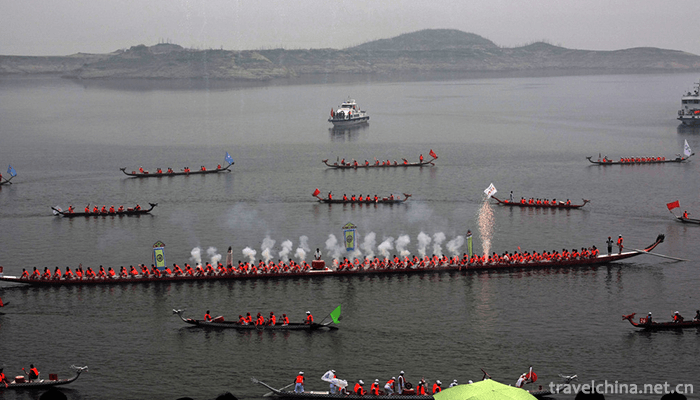
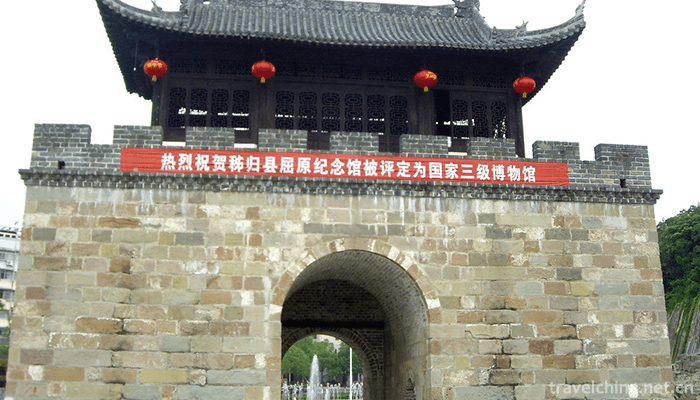
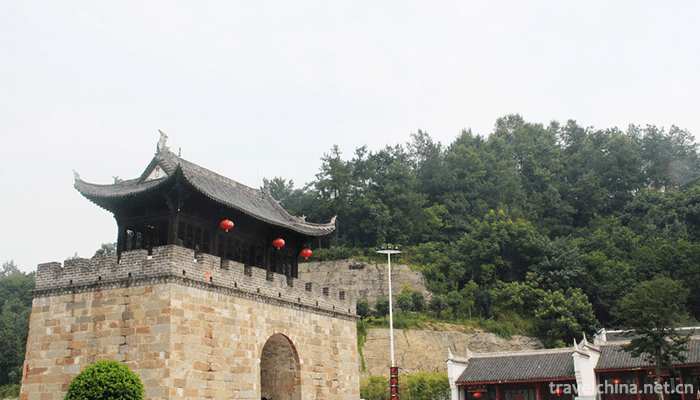
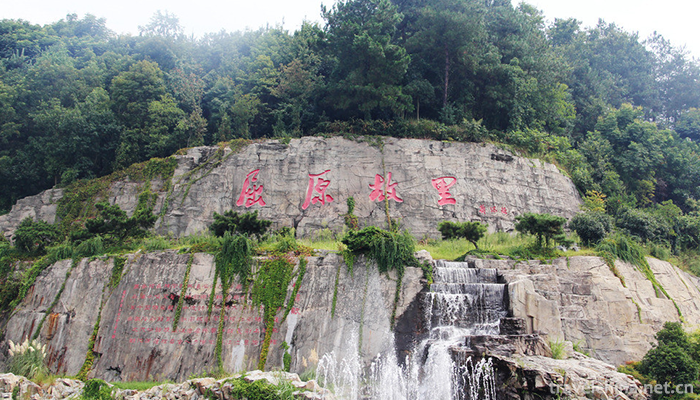
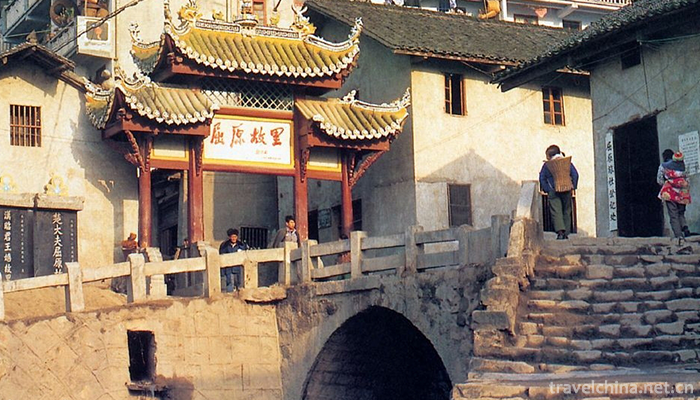
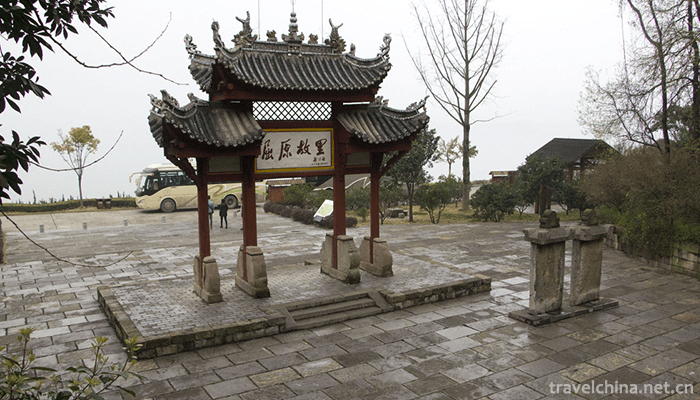
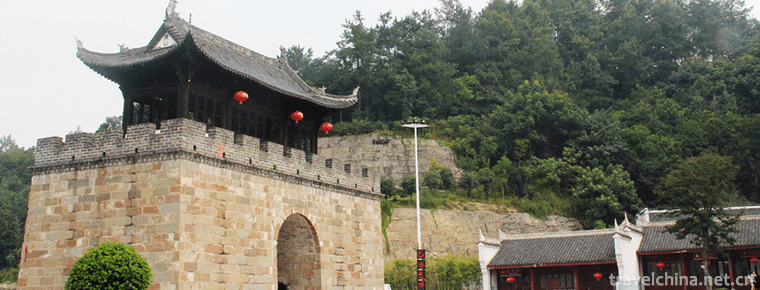
-
1.Ching Bo Leung
The word "cool" in Hainan dialect can be pronounced as "Yin Shang Sheng", which is homonymous with the two words used as weight unit. It is the soup of old fire for clearing heat a
Time 2018-11-05 -
2.Shaolin Temple
Shaolin Temple is the birthplace of Chinese Buddhist Zen ancestors and Kungfu. It is now a world cultural heritage, a national key cultural relics protection unit
Time 2018-11-11 -
3.Grand View Park
Daguan Park is located in the Dianchi Lake, about 2 kilometers west of Kunming City. It was built in the first year of Hongwu in the Ming Dynasty (1368 A.D.). In the thirty-fifth year of Emperor Kangx
Time 2019-01-06 -
4.Hunan Forest Botanical Garden
Hunan Forest Botanical Garden, also known as Tianjiling National Forest Park and Changsha Botanical Garden, was established in 1985 with the approval of Hunan Provincial People's Government and is und
Time 2019-01-16 -
5.Luxi County Alu Ancient Cave Scenic Area
The Alu Gudong Scenic Area is located in southeastern Yunnan Province, 2 kilometers west of Luxi County Town, Honghe Prefecture, Yunnan Province. "Alu ancient cave" is a Yi language,
Time 2019-02-06 -
6.Poyang Lake National Nature Reserve
Jiangxi Poyang Lake National Nature Reserve is located in the north of Jiangxi Province. It is a nature reserve for wildlife protection. The main protected objects are rare migratory
Time 2019-02-07 -
7.Memorial of Song Qinglings Former Residence in Shanghai
Song Qingling's former residence in Shanghai is the place where Song Qingling lived and lived for a long time. Qingling came to live here in the spring of 1949 and ushered in the liberation of Shangha
Time 2019-02-13 -
8.Black Tea Production Techniques
Black tea, originally known as "Border Tea", was smuggled across the border by merchants as early as the end of the 16th century. In the Ming Dynasty, black tea was designated as
Time 2019-05-03 -
9.Legend of Emperor Yan Shennong
Yan Emperor Shennong, one of the three emperors and five emperors, is one of the local folklores in Suizhou, Hubei Province, and is the national intangible cultural heritage. After Wa Fuxi, a stepdaug
Time 2019-07-10 -
10.Firing Techniques of Copper Official Ceramics in Changsha Kiln
Changsha kiln copper official ceramics firing technology, Hunan Province's traditional handicraft, one of the national intangible cultural heritage.
Time 2019-07-25 -
11.Mid Autumn Festival
Mid-Autumn Festival, also known as Moon Eve, Autumn Festival, Mid-Autumn Festival, August Festival, August Meeting, Moon Pursuit Festival, Playing Moon Festival, Moonworship Festival, Daughter's Festi
Time 2019-08-03 -
12.Health preservation in traditional Chinese medicine
Health preservation in traditional Chinese medicine refers to a kind of medical activity that can prolong life by taking care of life, strengthening physique and preventing diseases in various ways. H
Time 2019-08-03